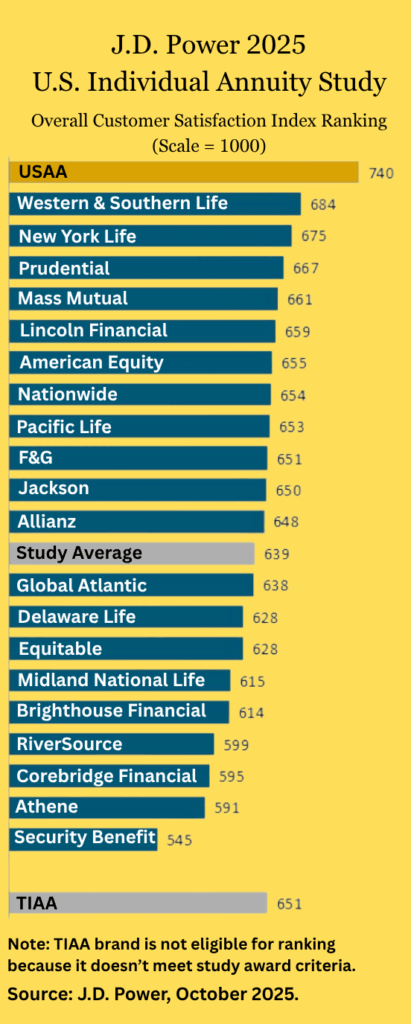
As the nation’s leaders search for a blend of “revenue enhancements” and spending cuts that will reduce the annual budget deficit without stunting the nation’s long slow economic recovery, tax expenditures have often surfaced as a potential sacrificial victim.
One of the biggest tax expenditures, though not the largest, involves the deduction for contributions to defined benefit plans, defined contribution plans, Keogh plans and IRAs. In 2015, according to a January 17, 2012 Congressional report, those plans will cost the government $61.6 billion, $102.1 billion, $16.9 billion and $23.9 billion, respectively.
By eliminating these expenditures entirely for the years 2011 through 2015, the government would have stood to receive an estimated $804.8 billion more in taxes (assuming that plan participants didn’t save less or stop saving because the incentive was gone).
No one really knows exactly what the cost of the tax deferral is, because it depends on such a wide range of variables, including future employment, tax rates and market returns. The Center for Retirement Research has put the cost in 2010 at $49 billion to $73 billion.
The Center based that estimate on “the value of the tax relief on this year’s contributions, plus the expected present value of the tax relief on future years’ interest dividends and capital gains on those contributions, minus the expected present of the eventual tax payable on withdrawals of those contributions,” CRR’s Anthony Webb told RIJ.
A cap, not a cancellation
The prospect of losing that subsidy is perceived as a grave threat by the retirement industry, which includes the insurance companies and mutual fund providers that service the $4 trillion or so in savings now held in DC plans, as well as an army of plan administrators, advisors and ERISA professionals.
Given the advocacy that the Obama administration has lavished on 401(k) participants so far in terms of fee transparency and fiduciary rules, it’s not likely to try and banish the tax expenditure for retirement savings entirely. Such a strategy would be patently inconsistent.
But an attempt might be made to cap the deduction or lower the deductible contribution amount. The maximum deferral is $17,500 for 2013 (or $23,000 for those age 50). Various plans have suggested capping the combined employer-employee contribution at the lesser of $20,000 or 20% of pay, or limiting the tax credit to 15% of contributions (“Domenici-Rivlin”) or 18% (William Gale of the Brookings Institution).
A cap makes sense to many observers, because it would correct one of the perceived inequities of the defined contribution tax break: the people in the highest tax brackets have the most to gain from the tax break. They are also the most likely to be offered a plan, to participate in a plan and to contribute the maximum to a plan. Some have argued that higher-income workers would save the same amount for retirement, even without the incentive.
The tax break for high-income workers is partly offset by a compensation clawback. Urban Institute researchers Eric Toder and Karen Smith found that employers tend to carve their matching contributions out of high-end salaries. In a September 2011 paper, they wrote, “Among male workers, an additional dollar of employer DC contributions replaces 90 cents of wages for workers with high family income, but only 29 cents for workers with low family income. Among female workers, an additional dollar of employer DC contributions replaces 99 cents of wages for those with high family income, but only 11 cents for those with low family income.”
In an interview, Toder told RIJ that, if the government wants to boost savings, it should shift more of the incentives to lower- and middle-class workers, where they’ll have a much bigger impact on the amount saved.
So the picture is a bit complicated. “Both low- and high-income workers benefit from employer DC contributions,” Toder and Smith noted. “Low-income workers benefit because their total compensation rises. High-income workers benefit because the increased access to tax-advantaged saving more than offsets their loss of money wages, even though their total compensation is about the same.”
In any case, those high-salaried, long-tenured managers and executives at larger firms are the retirement industry’s best customers. Any caps on their contributions would likely have a disproportionate effect on overall DC assets under management. Retirement industry groups are therefore mounting campaigns against the potential threat to their livelihood.
“Savemy401k”
ASPPA, the American Society of Pension Professionals & Actuaries, has just launched a campaign that it calls Savemy401k. It focuses on the argument that reducing the incentives for high earners, especially small business owners, would discourage them from sponsoring plans. And that would deny low- and middle-income employees their principal venue for saving.
 Most Americans don’t invest outside their employer-sponsored retirement plans. According to a recent report from Macromonitor, if you exclude investments in employer-sponsored plans, only about 15% of Americans own stocks or mutual funds, less than 10% invest in money market funds and fewer than 5% own corporate, municipal or Treasury bonds.
Most Americans don’t invest outside their employer-sponsored retirement plans. According to a recent report from Macromonitor, if you exclude investments in employer-sponsored plans, only about 15% of Americans own stocks or mutual funds, less than 10% invest in money market funds and fewer than 5% own corporate, municipal or Treasury bonds.
ASPPA, citing Employee Benefit Research Institute data, claims that more than 70% of workers earning from $30,000 to $50,000 participate in their employer 401(k) plans, while only 5% save for retirement without a plan at work Those savings represent more than 65% of their financial assets.
“The single most important factor in determining if a worker is saving for retirement is whether or not there is a plan at work. Last time Congress took up tax reform in 1986, employees’ 401(k) plans were cut by 70%, resulting in a mass termination of plans,” said Brian Graff ASPPA’s executive director, in a release.
“We understand Congress needs to reduce the debt and raise revenue but raiding the tax incentives for 401(k) plans will put American workers’ retirement security at risk,” he added. “Tens of millions of Americans participate in these retirement plans, and 80% of them earn less than $100,000 per year. This is a battle that American workers simply can’t afford to lose.”
The current retirement system, while undoubtedly effective for some, is nonetheless lopsided and patchy in several ways. Only about 40% of all workers participate in any workplace savings plan at all. Indeed, the percentage of full-time workers ages 21 to 64 participating in an employer-sponsored plan has trended downward from a peak of 60.4% in 1999 to 53.7% in 2011, according to EBRI. Nor do very many workers retire from existing plans with enough money to prevent a decline in living standards in retirement.
But the status quo, increasingly dominated by the defined contribution segment and less so by the defined benefit or public sector segment, is virtually the only game in town. The Obama administration is likely to do it no harm. There’s little chance that the tax expenditure for retirement savings will be sacrificed on the altar of fiscal rectitude.
Tax expert Eugene Steuerle of the Urban Institute agrees. He points out that President Obama has proposed including employee contributions to defined contribution plans as subject to his proposed limit on itemized deductions (deductible and excludable at more than a 28 percent rate).
In a recent email to RIJ, Steuerle wrote: “I could possibly see some tapering in areas that are considered more excessive, such as special defined benefit plans that tend to be used by professionals. But the Congress seems to be mainly focused on itemized deductions. I don’t see pensions right now as a target for the cut backs in tax preferences.”
© 2012 RIJ Publishing LLC. All rights reserved.


 During the equities market roller coaster of the 2000s, Yao (at right) noticed a self-defeating pattern among some of her older colleagues. When the market was down, both they and their portfolios were depressed; they felt too nervous to trade their tenured positions for retirement. The opposite was true when stocks boomed.
During the equities market roller coaster of the 2000s, Yao (at right) noticed a self-defeating pattern among some of her older colleagues. When the market was down, both they and their portfolios were depressed; they felt too nervous to trade their tenured positions for retirement. The opposite was true when stocks boomed.
 Most Americans don’t invest outside their employer-sponsored retirement plans. According to a recent report from Macromonitor, if you exclude investments in employer-sponsored plans, only about 15% of Americans own stocks or mutual funds, less than 10% invest in money market funds and fewer than 5% own corporate, municipal or Treasury bonds.
Most Americans don’t invest outside their employer-sponsored retirement plans. According to a recent report from Macromonitor, if you exclude investments in employer-sponsored plans, only about 15% of Americans own stocks or mutual funds, less than 10% invest in money market funds and fewer than 5% own corporate, municipal or Treasury bonds.
 RIJ: Volatility-controlled investment options are perhaps the hottest new tool for controlling risk and reducing hedging costs in variable annuities. One of your competitors, Ohio National, uses them in its OnCore contracts. Are you using them or considering using them?
RIJ: Volatility-controlled investment options are perhaps the hottest new tool for controlling risk and reducing hedging costs in variable annuities. One of your competitors, Ohio National, uses them in its OnCore contracts. Are you using them or considering using them?